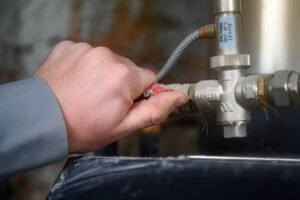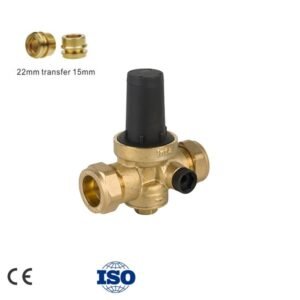Water pressure within your home is like blood pressure within your body: too high, and it can cause serious problems; too low, and it may not be effective. While low water pressure is typically annoying, high water pressure is a more serious concern that can lead to increased water waste, high utility bills, and damage to your home’s plumbing system. This article will delve into why water pressure management is crucial, how to assess your water pressure, and practical steps you can take to reduce it to a safer, more efficient level.
The Importance of Proper Water Pressure
Ideal water pressure is essential for the functionality of your home’s plumbing system. High water pressure, which is generally considered pressure above 60 pounds per square inch (psi), can strain your plumbing fixtures and connections. This excess pressure can lead to pipe bursts, leaky faucets, running toilets, and can drastically shorten the lifespan of appliances such as dishwashers, washing machines, and water heaters.
Step 1: Assessing Your Water Pressure
Before taking measures to reduce your water pressure, it’s important to determine your current pressure level.
Tools You Need:
- Water Pressure Gauge: This is a device that screws onto a tap, usually a hose bib or washing machine bib. It can give you an instant reading of your home’s water pressure.
How to Measure:
- Attach the Gauge: Screw the pressure gauge onto any hose bib or washing machine tap. Make sure it is tightly secured.
- Open the Tap: Turn on the tap fully so that the water pushes against the gauge, giving a pressure reading.
- Record the Pressure: Take note of the pressure reading. It’s best to take several readings at different times of the day, as pressure can fluctuate during peak water usage times.
Step 2: Installing a Pressure Reducing Valve (PRV)
If your readings consistently show high pressure (above 60 psi), installing a PRV can effectively reduce and regulate the pressure. PRVs are typically installed where the main water line enters the home, allowing them to control the pressure of all the water entering your premises.
Installation Tips:
- Hire a Professional: Installing a PRV involves cutting into your main water line and should generally be done by a professional plumber to ensure it is done correctly.
- Choose the Right Valve: Make sure the PRV is suitable for your home’s plumbing and is of good quality. Look for valves with adjustable settings so you can fine-tune the pressure.
- Regular Maintenance: Like any part of your plumbing, PRVs require maintenance. Check the PRV annually as part of your home maintenance schedule. This check should include cleaning the valve and checking its operation.
Step 3: Fixing Leaks and Other Plumbing Issues
High water pressure can exacerbate existing leaks and plumbing issues. Reducing your water pressure can help, but you should also:
- Inspect for Leaks: Regularly check your plumbing for leaks, particularly at joints and connection points.
- Replace Old Pipes: If your home has older, weakened pipes, consider replacing them with modern materials that can better withstand higher pressures.
- Secure Connections: Ensure that all plumbing connections, especially those vulnerable to water hammer, are secure.
Step 4: Consider Installing Water Hammer Arrestors
Water hammer, the loud banging noise in pipes after a tap is quickly turned off, is often caused by high water pressure. Installing water hammer arrestors can mitigate this by cushioning the shock of the stopping water.
Installation:
- Location: Water hammer arrestors should be installed near appliances and fixtures that cause water hammer, such as dishwashers, washing machines, and toilets.
- Professional Installation Recommended: While some arrestors are designed for DIY installation, for optimal placement and effectiveness, professional installation is recommended.
Step 5: Monitor and Adjust
Even after taking measures to reduce your water pressure, continuous monitoring is key to maintaining the right pressure levels.
- Regular Checks: Use your water pressure gauge periodically to check the pressure. Adjust the PRV as needed.
- Listen to Your Plumbing: Be alert to changes in how your plumbing sounds. Noise can often be the first indicator of a problem.
Conclusion
Maintaining the correct water pressure is not just about extending the life of your plumbing and reducing leaks. It’s also about conserving water and saving money on your water bill. By understanding the dynamics of water pressure and taking proactive steps to manage it, you can ensure that your plumbing system remains healthy and efficient for years to come. Whether through the installation of a PRV, regular maintenance, or simply being more aware of the signs of excessive pressure, managing your home’s water pressure is an essential part of maintaining a safe and cost-effective household.






